Riddles have been around for centuries, delighting people with their clever wordplay and ability to tease the mind. Though riddles are short in length, they showcase the creativity of language and the many techniques that can be used to construct intricate puzzles. Understanding the linguistic tools used in riddles not only lets us appreciate the artistry behind them but also allows us to craft trickier and more complex riddles of our own.
The Many Linguistic Techniques of Riddles
Riddles are often built on clever language that shows the versatility and flexibility of words. Some key techniques used include:
Homophones
Homophones are words that sound alike but have different meanings and often different spellings. Riddles frequently rely on homophones to set up double meanings or confusion. For example:
“What five-letter word becomes shorter when you add two letters to it?“
The homophones “short” and “shorter” are key here.
Anagrams
Anagrams take the letters from one word and rearrange them to make a new word. Finding the anagram solves the riddle. For instance:
“I’m tall when I’m young, and I’m short when I’m old. What am I?“
The anagram of “tall” is “lamp” – the answer.
Gunplay
Puns unite words with the same sound but distinct meanings. Puns are commonly used in riddles, like:
“What do you call a three-footed aardvark?“
“A yardvark!” The pun joins “yard” and “aardvark.”
Alliteration
Alliteration repeats the same first consonant sounds in a sequence of words. It can make riddles more memorable, like:
“Variously vexing, I vacillate yet venture victoriously. What am I?“
Here the v-sounds point to “victory.”
Layers of Meaning Through Wordplay
Part of what makes riddles so engaging is the layered sense of meaning created through wordplay. A single riddle may have double, triple or even more layers of significance.
Homophones, for example, prompt us to think about the multiple meanings of similar-sounding words. Puns join together different concepts into new combinations of meaning. Anagrams rearrange letters – the raw material of words – to build new meanings.
This density of meaning challenges our minds to unravel the riddle and see the wordplay at work. We have to dig beneath the surface level to grasp the riddle’s intricacies.
Solving riddles almost feels like decoding a secret message, with attention to detail revealing meanings hidden in the words. This sense of concealed significance adds to the delight when the riddle finally clicks and we uncover the wordplay.
Riddles as Language Creativity on Display
Riddles don’t just tease our thinking – they showcase the incredible creativity of language itself. Inventing riddles requires witty wordplay and artful manipulation of linguistic techniques.
This language artistry is part of what makes riddles so culturally enduring. The earliest riddles on record come from ancient Sumeria over 4,000 years ago, though likely riddles existed in oral tradition long before.
Riddles appear in writing across ancient world cultures from Greece to China. Prominent riddles populate folk tales and myths such as the riddle contest between Oedipus and the Sphinx. Shakespeare incorporated riddles into scenes in his plays. Hobbits Bilbo and Gollum face off in a game of riddles in Tolkien’s The Hobbit.
This rich history speaks to the captivating nature of imaginative wordplay that riddles represent. Riddles elegantly demonstrate the versatility and suppleness of language in skilled hands.
Famous Riddles Showcasing Wordplay Through the Ages
Looking at examples of stand-out riddles across different eras shows the evolution of clever linguistic techniques through history:
“A box without hinges, key or lid, yet golden treasure inside is hidden.”
This riddle comes from J.R.R. Tolkien’s The Hobbit and describes an egg, combining metaphorical language with descriptive clues.
“Thirty white horses on a red hill, first they champ, then they stamp, then they stand still.”
Dating back to Ancient Rome, this visual riddle uses symbolic imagery to describe teeth and gums.
“What word becomes shorter when you add two letters to it?”
The homophone trick of “short” and “shorter” makes this classic riddle work.
“What occurs once in a minute, twice in a moment, but never in one thousand years?”
This 17th-century riddle plays with time and frequency with the answer of the letter “M”.
“What flies without wings?”
This simple modern riddle activates lateral thinking skills, with time as the answer.
These examples show how riddles intelligently combine metaphor, wordplay, imagery, and lateral thinking to hide meanings beneath the surface across all eras.
The Role of Puns in Riddle Wordplay
Puns, with their double meanings, are a vital component in riddle wordplay. Puns create an ambiguity that sparks the “Aha!” moment when the pun’s layered meaning becomes clear.
Take this riddle:
“What do you call a dog magician?“
The pun here fuses together the concepts of a “dog” and a “magician” into the answer – a “labracadabrador.”
Puns compactly package together multiple meanings and associations. This density helps make puns ideal for riddles where space is limited. A single pun can imply an entire second layer of significance.
The surprise and slight absurdity of puns also add to their impact in riddles. Having two distinct meanings abruptly combined tickles our sense of the ridiculous. Puns yoke together incongruous concepts, like “dog” and “magician,” in ways that amuse our minds.
So puns let riddles efficiently build in extra dimensions of meaning and prompt bursts of insight when unlocked. No wonder puns are a riddle writer’s best friend!
Metaphor and Symbolism in Riddles
Riddles also rely heavily on metaphor and symbolism to hint at answers in colorful ways. For example:
“I have cities, but no houses. I have mountains, but no trees. I have water, but no fish. What am I?“
This riddle uses geographical metaphors – cities, mountains, water – to describe a map. The metaphors paint a vivid mental picture to steer our thinking.
Metaphors allow riddles to connect physical objects or experiences with more abstract concepts. Linking tangible images to intangible ideas in surprising ways engages our imagination.
Symbols work similarly to represent something larger. For instance, the riddle above uses “houses,” “trees,” and “fish” as symbols of habitation rather than explicitly saying “no people.”
Using metaphoric language and symbols expands the scope of ideas that riddles can explore. This richness and resonance is part of what makes riddles so rewarding to ponder.
Crafting Your Own Riddles with Wordplay

Once you understand the various techniques used in riddles, you can start building your own. Here are some tips:
- Brainstorm metaphors, symbols, or analogies that link a concrete object with a more abstract concept. This forms an imaginative basis for the riddle.
- Incorporate puns or homophones that add sly double meanings. Wordplay dictionaries are a great resource for inspiration.
- Don’t reveal the answer outright. Use descriptive phrasing that points toward the solution through clues.
- Try an anagram as the central trick of the riddle. Position letters in words that can be rearranged to surprising effect.
- Build unexpected imagery through similes, alliteration, rhyming, and other poetic devices to tease and delight minds.
- Test riddles out on friends and family. Adjust where needed to increase fun and difficulty.
With basic guidelines but ample room for creativity, crafting riddles is an enjoyable linguistic challenge. A well-executed riddle showcases the flexibility of language while stimulating and engaging critical thinking.
Frequently Asked Questions About Riddles and Wordplay
Here are answers to some common questions about the clever use of language in riddles:
Why are riddles so effective at demonstrating language artistry?
The constrained space of riddles demands inventive wordplay to imply the answer indirectly. This generates linguistic creativity. Constraints drive innovation.
Do you need an advanced vocabulary to craft clever riddles?
Not at all. Some very tricky riddles use only simple words. Creativity in manipulating words is more important than complex terminology.
What makes a riddle’s wordplay satisfying when solved?
It clicks together the layered meanings hidden before the solution. Aha moments deliver rewards to the brain.
Are puns the only wordplay technique used in riddles?
No, puns are one of many techniques including anagrams, homophones, alliteration, metaphor, and more. Variety keeps riddles exciting.
Can you use rhyme in riddles or does that give the game away?
Rhyme can be used judiciously without revealing answers. Just be careful it doesn’t make solutions too obvious.
Conclusion: The Depth of Riddles Reflects the Depth of Language
Riddles have entertained people across cultures for millennia, showcasing the human mind’s delight in puzzles and verbal trickery. But riddles also reveal something deeper about the nature of language itself.
In riddles, we see language pushed to new limits of creativity, ambiguity, and layered significance. Riddle wordplay displays the multifaceted character of words. This linguistic dexterity is what gives riddles their enduring, engaging appeal.
So the next time you solve a tricky riddle, take a moment to appreciate the artful wordplay. Like a skillful magician, it misdirects and delights in equal measure, revealing language itself as the greatest riddle of all.

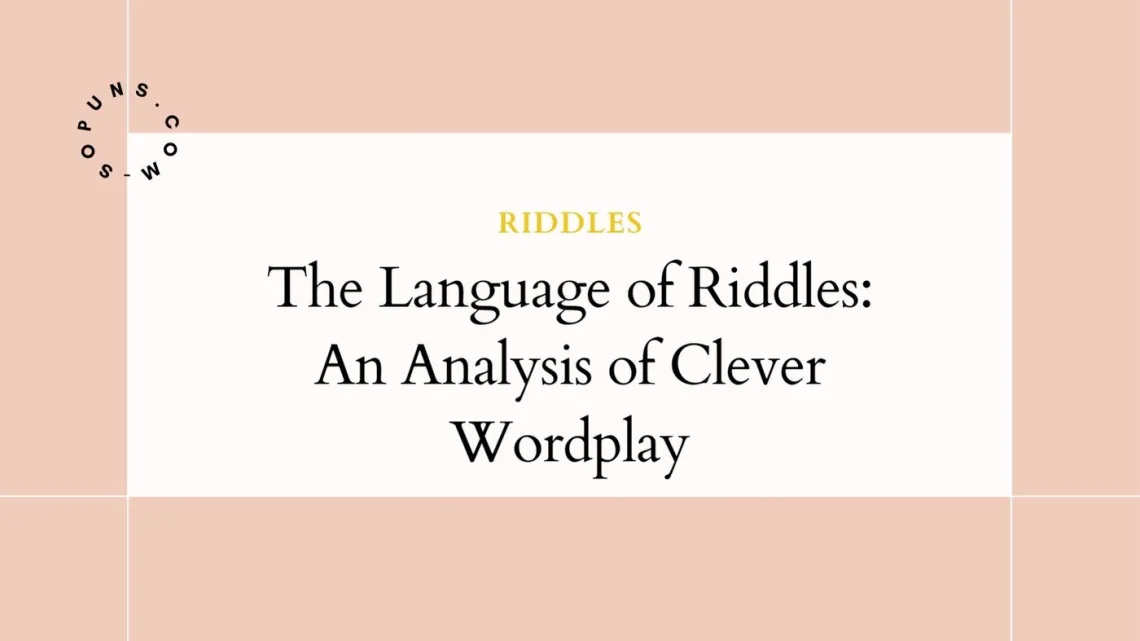
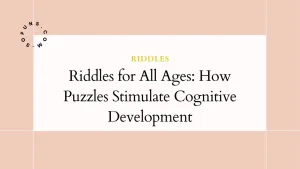
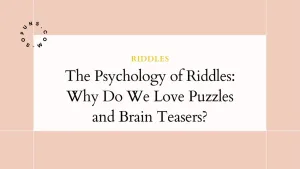
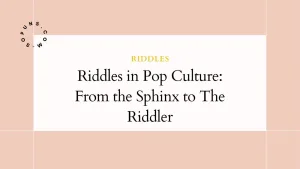
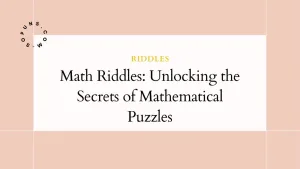
No Comments